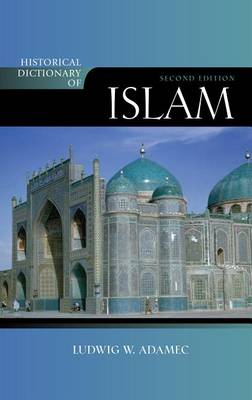Historical Dictionaries of Religions, Philosophies, and Movements
1 total work
There is both unity and variety in the Islamic world. Muslims are not a homogeneous people who can be explained solely by their normative texts: the Koran and the Sunnah. Muslims differ vastly in their interpretation of Islam: modernists want to reinterpret Islam to adapt to the requirements of modern times while traditionalists tend to look to the classical and medieval periods of Islam as their model of the Islamic state. The second edition of the Historical Dictionary of Islam presents a concise overview of Islamic history, religion, philosophy, and Islamic political movements. This is done through a list of abbreviations and acronyms, a chronology, an introductory essay, a bibliography, and cross-referenced dictionary entries, which include the biographies and thoughts of medieval thinkers, as well as those of modern members of the religious and political establishments. Articles describe the major sects, schools of theology, and jurisprudence, as well as aspects of Islamic culture. Together, this book represents a brief introduction to the field of Islamic studies.
